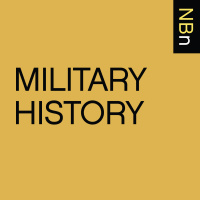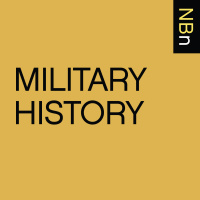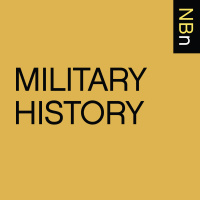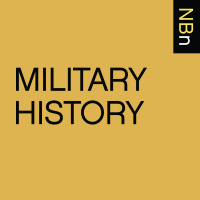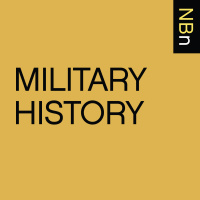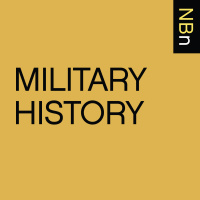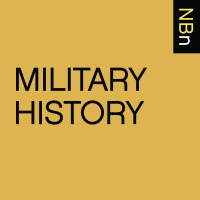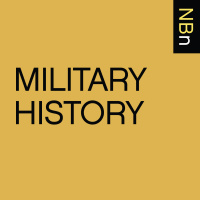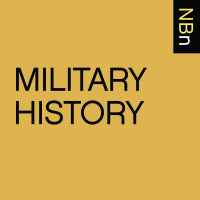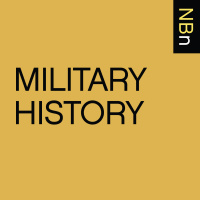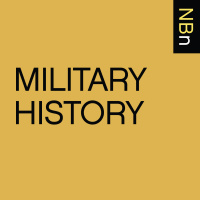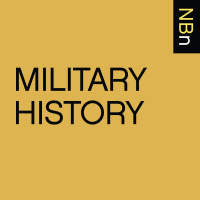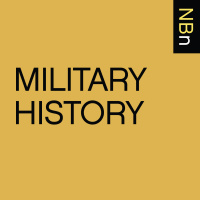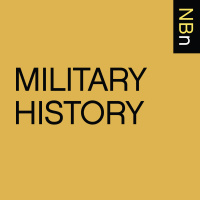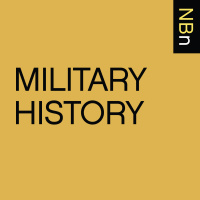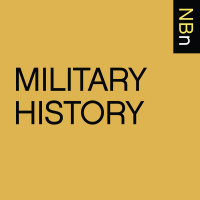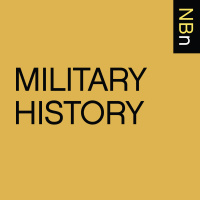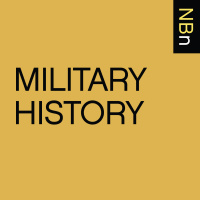Sinopsis
Interviews with Scholars of Military History about their New Books
Episodios
-
Stefanos Geroulanos and Todd Meyers, "The Human Body in the Age of Catastrophe: Brittleness, Integration, Science, and the Great War" (U Chicago Press, 2018)
28/11/2018 Duración: 01h03sThe prologue to The Human Body in the Age of Catastrophe: Brittleness, Integration, Science, and the Great War (University of Chicago Press, 2018) begins by provocatively invoking a question American physiologist Walter Cannon first asked in 1926: “Why don’t we die daily?” In the erudite chapters that follow, Stefanos Geroulanos and Todd Meyers explore how practitioners and theorists working during and after World War I tried to answer that very thorny problem in light of the challenges of wound shock. This functional disorder demanded that doctors, surgeons, and physiologists account for two medical realities: first, that wound shock was a whole-body, multi-systemic response to trauma; and second, that a fairly homogenous group—namely the young, male soldier-patient—responded to wound shock in highly variable and individuals ways. Whereas the historiography of World War I and trauma has largely focused on psychopathological models, Geroulanos and Meyers illuminate how the work of Henry Head, Réné Leriche, Ku
-
Erin Stewart Mauldin, “Unredeemed Land: An Environmental History of Civil War and Emancipation in the Cotton South” (Oxford UP, 2018)
09/11/2018 Duración: 58minThe antebellum South was on the road to agricultural ruin, and the Civil War put a brick on the gas pedal. In Unredeemed Land: An Environmental History of Civil War and Emancipation in the Cotton South (Oxford University Press, 2018), a sweeping reassessment of some of the oldest questions in U.S. historiography, Erin Stewart Mauldin draws on ecology to help her offer a fresh, powerful explanation for why a region that produced so much wealth for centuries became characterized by widespread poverty in the late nineteenth century. She argues that cotton plantations were hardly ecologically sustainable enterprises, yet their habits of shifting cultivation of staple crops and free-range livestock husbandry were better suited to the region’s nutrient-poor soils and oppressive climate than the prevailing land-use practices of northern farmers. But when the war came, the crisis southern farmers had kept in the offing arrived quickly at their shores. Both armies sustained themselves by emptying the South’s granaries
-
Max Hastings, “Vietnam: An Epic Tragedy, 1945-1975” (Harper, 2018)
06/11/2018 Duración: 51minPeople of various political stripes in many countries (particularly those countries where various political stripes are allowed) have been arguing about the Vietnam War for a long time. The participants in these debates were (and are) always quick to assign blame in what seems to be an endless attempt to justify “their side” and vilify “the other side.” In this context, Max Hastings’ new book Vietnam: An Epic Tragedy, 1945-1975 (HarperCollins, 2018) comes as something of a relief, for he essentially says that all the “sides” in the war made a moral mess of things. According to Hastings, the North Vietnamese, the South Vietnamese, the French, and the Americans were all guilty as sin of cynically starting, ruthlessly fighting, and stubbornly continuing a conflict that was, if not “unnecessary,” at least not worth it for any of them. In Hastings’ very readable account, everyone gets their hands very dirty indeed. Listen in.Learn more about your ad choic
-
Nathan K. Finney and Tyrell O. Mayfield, “Redefining the Modern Military: The Intersection of Profession and Ethics” (Naval Institute Press, 2018)
31/10/2018 Duración: 53minRedefining the Modern Military: The Intersection of Profession and Ethics (Naval Institute Press, 2018), edited by Nathan K. Finney and Tyrell O. Mayfield, is a collection of essays examining military professionalism and ethics in light of major changes to modern warfare. Contributors examine philosophical and legal questions about what constitutes a profession, the requirements of a military professional, and military education. Additionally, the authors tackle questions of ethics related to new technological advancements, such as unmanned aircraft. Finally, an interesting discussion of the military’s relationship with society, and vice versa, is discussed as an important component of oversight of the profession. Today I spoke with Finney and one of the contributors, Brian Laslie. Beth Windisch is a national security practitioner. You can tweet her @bethwindisch.Learn more about your ad choices. Visit megaphone.fm/adchoices
-
N. M. Sambaluk, “The Other Space Race: Eisenhower and the Quest for Aerospace Security” (Naval Institute Press, 2015)
29/10/2018 Duración: 01h26minMany people place the beginning of the American space program at 7:28pm, October 4, 1957 – the moment the Soviet Union launched the first satellite, Sputnik I, into orbit. This event prompted the United States to open up its own crash program to put first a satellite, then later, human beings, into space. The primary motivating factor for all this, was the fear of missiles being the primary delivery system for nuclear warheads at the height of the Cold War. Our guest in this episode –Nicholas Michael Sambaluk – makes the case for another perspective on the Eisenhower Administration’s decision to engage in space exploration. In his book The Other Space Race: Eisenhower and the Quest for Aerospace Security (Naval Institute Press, 2015), Sambaluk describes the checkered history of the Dynamic Soarer Space Glider Bomber – a.k.a. “Dyna-Soar,” a heat-resistant single seat-space shuttle that was intended to guarantee American aerospace superiority. Though ultimately canceled, the Dyna-Soar program’s legacy cont
-
David Pietrusza, “TR’s Last War: Theodore Roosevelt, the Great War, and a Journey of Triumph and Tragedy” (Lyons Press, 2018)
17/10/2018 Duración: 58minTeddy Roosevelt had one of the most colorful lives in the American history, but few have deeply explored his final years. Historian David Pietrusza does just that in TR’s Last War: Theodore Roosevelt, the Great War, and a Journey of Triumph and Tragedy (Lyons Press, 2018), taking us through a period in which Roosevelt exhorts an America prone to isolationism to join the war against Germany, only for the war to take the life of one of his sons. Pietrusza tracks how Roosevelt’s alters America’s political history, abandoning his “Bull Moose” party and re-uniting the Republicans in hopes of strengthening American foreign policy. And the author chronicles Roosevelt’s heartbreak, unable to die a glorious death on the battlefield himself, but bereaved to see his son die from a policy he advocated. Pietrusza also offers evidence of a controversial theory: that a depressed Roosevelt ultimately took his own life with an overdose of morphine. Bill Scher is a Contributing Editor for POLITICO Magazine. He has provi
-
Nathaniel Philbrick, “In the Hurricane’s Eye: The Genius of George Washington and the Victory at Yorktown” (Viking, 2018)
16/10/2018 Duración: 47minMost Americans do not appreciate the extent to which victory in the American Revolution was due to the leadership of a French aristocrat. As Nathaniel Philbrick demonstrates in his new book In the Hurricane’s Eye: The Genius of George Washington and the Victory at Yorktown (Viking, 2018), it was Admiral Comte de Grasse’s naval victories which made possible George Washington’s decisive victory at the battle of Yorktown. Such a victory did not seem possible at the start of 1781, as the British imperial forces seemed locked in an intractable stalemate with the rebelling colonists. In that year, however, the assistance of the French helped to tip the balance, not just on sea but in the land war as well. Once Admiral de Grasse’s ships drove off the British fleet in the battle of the Chesapeake, Washington was able to lay siege to General Charles Cornwallis’s forces at Yorktown with a combined Franco-American army, defeating the main British force in the Southern states and realizing America’s independence.Le
-
Susan Carruthers, “The Good Occupation: American Soldiers and the Hazards of Peace” (Harvard UP, 2016)
15/10/2018 Duración: 01h58sIn her new book, The Good Occupation: American Soldiers and the Hazards of Peace (Harvard University Press, 2016), Dr. Susan Carruthers, professor of American Studies at the University of Warwick, chronicles America’s transition from wartime combatant to post-war occupier in both Germany and Japan. This excellent book examines occupation by exploring the thoughts and feelings of ordinary servicemen and women who participated in the difficult task of rebuilding defeated nations. By examining occupation from the ground up, this book effectively tackles the mythology surrounding America’s occupation and demonstrates that the rebuilding of post-war Europe and Japan was a difficult and by no means straightforward.Learn more about your ad choices. Visit megaphone.fm/adchoices
-
Brian VanDeMark, “The Road to Disaster: A New History of America’s Descent Into Vietnam” (Harper Collins, 2018)
09/10/2018 Duración: 27minMany books have been written on the tragic decisions regarding Vietnam made by the young stars of the Kennedy and Johnson administrations. Yet despite millions of words of analysis and reflection, no historian has been able to explain why such decent, brilliant, and previously successful men stumbled so badly. That changes with The Road to Disaster: A New History of America’s Descent Into Vietnam (Harper Collins, 2018). Historian Brian VanDeMark, a professor of history at the United States Naval Academy, draws upon decades of archival research, his own interviews with many of those involved, and a wealth of previously unheard recordings by Robert McNamara and Clark Clifford, who served as Defense Secretaries for Kennedy and Johnson. Yet beyond that, Road to Disaster is also the first history of the war to look at the cataclysmic decisions of those in the Kennedy and Johnson administrations through the prism of recent research in cognitive science, psychology, and organizational theory to explain why the ̶
-
Joan E. Cashin, “War Stuff: The Struggle for Human and Environmental Resources in the American Civil War” (Cambridge UP, 2018)
28/09/2018 Duración: 57minThe Civil War was even more disastrous than we thought. Joan Cashin, already a distinguished scholar of the period, looks afresh at the war through the lens of environmental history and material culture and finds only more terrors and even greater suffering. War Stuff: The Struggle for Human and Environmental Resources in the American Civil War (Cambridge University Press, 2018) draws from a dizzying cache of research from nearly four dozen archives to capture the brutality and desperation of the wars that raged beyond the battlefield—over food, timber, shelter, and the control of people themselves. Most of these struggles were not between the armies, but between soldiers and civilians. Despite Lost Cause slurs against Sherman and his ilk, Cashin finds both armies fully capable of emptying the stores, robbing the woodlots, and torching the homes of white noncombatants. To have two massive armies with nearly inexhaustible appetites for resources crisscrossing the South ensured widespread devastation. But the d
-
Giulio Ongaro, “Peasants and Soldiers: The Management of the Venetian Military Structure in the Mainland Dominion between the 16th and 17th Centuries” (Routledge, 2017)
25/09/2018 Duración: 30minDr. Giulio Ongaro, currently a postdoctoral fellow in the Economics Department at the University of Milan-Bicocca has just published Peasants and Soldiers: The Management of the Venetian Military Structure in the Mainland Dominion between the 16th and 17th Centuries (Routledge, 2017), a fascinating study of the early modern Venetian military. Rather than focus on the city itself or the republic’s higher-profile naval forces, Ongaro examines the workings of the Venetian land forces—its cavalry, militia, and fortress structures. Financing and supplying these forces required increasingly sophisticated administrative measures that, as in so many European states at the time, drove the expansion of state institutions. Most previous studies have assumed that such expansion came at the expense of local power structures and that state administrations existed in competition with local elites. By examining the records of municipal and rural archives in the Venetian hinterland, Ongaro instead shows that while the central
-
Stephen R. Platt, “Imperial Twilight: The Opium War and the End of China’s Last Golden Age” (Knopf, 2018)
24/09/2018 Duración: 01h01minThe reason for Great Britain’s war against China in the First Opium War (1839-42) is often taken as a given. British merchants wanted to “open” trade beyond the port of Canton (Guangzhou) and continue dealing in the lucrative commodity, opium. Historian Stephen R. Platt’s book, Imperial Twilight: The Opium War and the End of China’s Last Golden Age (Knopf, 2018) proves that the path to war was not so simple. Internal rebellions weakened the Qing military and stretched resources thin. British themselves debated the merits of the Canton system that restricted all Western foreigners and their trade in China to a single port. Some Qing officials considered opium a wholly domestic issue while others considered how best to resolve opium smuggling–by legalizing opium or ejecting foreigners from Canton. Platt traces the narratives of figures who played significant roles in the mounting conflict and identifies lynchpin moments when the history of China and the West could have turned out much differently.Learn mo
-
Brian D. Laslie, “Architect of Air Power: General Laurence S. Kuter and the Birth of the U.S. Air Force” (UP of Kentucky, 2017.
14/09/2018 Duración: 39minWe have all seen pictures of the “Big Three” (Churchill, Roosevelt, Stalin) at their historic meeting Yalta in February 1945. The three leaders command the viewer’s attention, naturally, but in the background of the various versions of that photo are other important figures. One can glimpse George Marshall in some. Foreign ministers Eden and Molotov appear in others. American Admirals King and Leahy are there. And so is a U.S. Army Air Force general named Larry Kuter. Not exactly a household name, Kuter was an enormously influential figure, who richly deserves this excellent biography written by airpower expert, Brian Laslie: Architect of Air Power: General Laurence S. Kuter and the Birth of the U.S. Air Force (University Press of Kentucky, 2017). Dr. Laslie is the Deputy Command Historian at NORAD and US Northern Command and the author of another noteworthy book on the U.S. Air Force: The Air Force Way of War: U.S. Tactics and Training after Vietnam (2015), which I can also recommend. Laslie kept encounterin
-
Peter Heather, “Rome Resurgent: War and Empire in the Age of Justinian” (Oxford UP, 2018)
10/09/2018 Duración: 58minIn the 6th century CE, the Roman emperor Justinian embarked upon a series of wars that seemed to herald the restoration of the Roman empire in the western Mediterranean. In his book Rome Resurgent: War and Empire in the Age of Justinian (Oxford University Press, 2018), Peter Heather recounts the campaigns of Justinian’s armies and the factors that made them possible. As Heather explains, the Roman imperial state in the 6th century was one focused mainly upon the waging of war, though for all of the revenue expended upon its armies the eastern Romans had experienced a series of defeats at the hands of their Sassanian Persian rivals to their east. Soon after Justinian took the throne, however, the eastern Roman armies enjoyed a series of successes thanks to the leadership of his most successful commander, Belisarius. While these victories helped define Justinian’s stature as emperor, maintaining them ultimately proved the greater challenge, one that Justinian’s successors were unable to accomplish.Learn more ab
-
N.A.J. Taylor and R. Jacobs, eds., “Reimagining Hiroshima and Nagasaki: Nuclear Humanities in the Post-Cold War” (Routledge, 2017)
05/09/2018 Duración: 02h02minN.A.J. Taylor and Robert Jacobs,’s edited volume Reimagining Hiroshima and Nagasaki: Nuclear Humanities in the Post-Cold War (Routledge, 2017) developed out of a special journal issue of Critical Military Studies organized on the occasion of the 70th anniversary of the atomic bombings of Hiroshima and Nagasaki. Taylor and Jacobs have gathered a subtly interwoven set of papers that together offer a distinctly post-Cold War perspective Hiroshima and Nagasaki—not just the bombings, but their long, continuing aftermaths. At various levels of granularity and expansiveness, the contributors present a diverse set of approaches and findings in what the editors describe as the “exciting new field of Nuclear Humanities.” The contributions to this volume are arrayed along five “pathways” laid out by the editors in their introduction: “testimony from lived experience;” “memorialization and commemoration;” “ordinary people’s resentment, suffering, and forgiveness;” the long-term and universal effects of nuclear weap
-
Gerald Gems, “Sport and the American Occupation of the Philippines: Bats, Balls, and Bayonets” (Lexington Books, 2016)
14/08/2018 Duración: 56minToday we are joined by Gerald Gems, Professor of Kinesiology at North Central College in Naperville, Illinois, and the author of several books on sports history including Sport in American History: From Colonization to Globalization (2017), Sport and the American Occupation of the Philippines (2016), and Blood and Guts to Glory: A History of Sports (2014). Gems is also the former president of the North American Society for Sport History, the former vice-president of the International Society for the History of Physical Education and Sports, and a former Fulbright Scholar. In Sport and the American Occupation of the Philippines: Bats, Balls, and Bayonets (Lexington Books, 2016), Gems explores the history of sport during the US occupation of the Philippines. Based on extensive primary and secondary source research, Gems work uses hegemony theory to investigate how and why American colonizers imported ideas about sports to the Philippines, and in what circumstances Filipinos adopted, adapted, rejected these sp
-
Nick Dybek, “The Verdun Affair: A Novel” (Scribner, 2018)
14/08/2018 Duración: 45minIn a break with protocol, I decided to interview a novelist rather than a military historian. Nick Dybek, a creative writing professor at Oregon State University has written a terrific novel, The Verdun Affair: A Novel (Scribner, 2018). It’s protagonist is Tom, an American living in France after World War I, having served as an ambulance driver for the American Field Service. He has the macabre task of gathering bones from the battlefield at Verdun, in preparation for the construction of ossuary there. Families come from all over France, looking for news, or perhaps the remains, of loved ones reported missing or dead during the war. One such pilgrim is Sarah, also American, looking for her husband, Lee, whom she is convinced still lives. You can learn more about the story in the interview (or go read the book!), which also details some of the remarkable historical research that Dybek conducted as he wrote. The sense of global catastrophe, the losses of grieving families, the search for meaning, the effo
-
John M. Curatola, “Bigger Bombs for a Brighter Tomorrow: The Strategic Air Command and American War Plans at the Dawn of the Atomic Age, 1945-1950” (McFarland, 2016)
01/08/2018 Duración: 51minConventional wisdom has long held the position that between 1945 and 1949, not only did the United States enjoy a monopoly on atomic weapons, but that it was prepared to use them if necessary against an increasingly hostile Soviet Union. This was not exactly the case, our guest John M. Curatola argues in his book, Bigger Bombs for a Brighter Tomorrow: The Strategic Air Command and American War Plans at the Dawn of the Atomic Age, 1945-1950 (McFarland & Company, 2016). Curatola is a professor of history at the United States Army Command and General Staff College at Fort Leavenworth, Kansas. He presents the story of an ad hoc, frequently chaotic, strategic defense posture at the opening of the Cold War. Inter-service rivalries, inter-agency bickering, and deficiencies in equipment, morale, and training all left the United States Air Force and the Atomic Energy Commission to pursue their own strategic plans, which Curatola notes were unrealistic, and in some cases, almost ludicrous.Learn more about your
-
William D. Godsey, “The Sinews of Habsburg Power: Lower Austria in a Fiscal-Military State, 1650-1820” (Oxford UP, 2018)
17/07/2018 Duración: 53minDuring the 17th and 18th centuries, Austria established itself as one of the dominant powers of Europe, despite possessing much more limited fiscal resources when compared to its counterparts. In The Sinews of Habsburg Power: Lower Austria in a Fiscal-Military State, 1650-1820 (Oxford University Press, 2018), William D. Godsey uses the financial support provided by one region of the Habsburg’s empire to understand how it maintained its status during a time of change in the nature of military power. As Godsey explains, the challenge was posed by the contrasting trends of a need for a larger standing army and the ability of the region’s economy to support it. In response to the demands placed on it, the Estates of the region – the assemblage of clerical, noble, and municipal leaders who implemented taxes for the monarchy – evolved to play a regular role in supplying the Habsburg armies with the resources it needed to operate. This evolution preserved the importance of the role the Estates played in the exercise
-
Guy Laron, “The Six-Day War: The Breaking of the Middle East” (Yale UP, 2017)
16/07/2018 Duración: 55minThe title of Guy Laron’s The Six-Day War: The Breaking of the Middle East (Yale University Press, 2017) says it all. As Laron notes in this interview, the fact that the war led to ongoing conflicts in the Middle East is an accepted interpretation of the war’s meaning. However, through his research Laron has provided a new lens by which to understand the war. Using a holistic perspective that situates the war in the context of the Cold War and the economic development of the non-western world, Laron argues that several broader trends pushed the Israeli and Arab states into conflict in 1967. As developmental aid disappeared, Arab and Israeli governments alike were facing crises of confidence from their own populations. Reliance on the military became a way to earn legitimacy with a public that was becoming disenchanted, though it also fed into a number of increasingly belligerent moves that ultimately led to war on June 5, 1967. Laron’s research shows as well the role of the superpowers in this conflict. As dev


